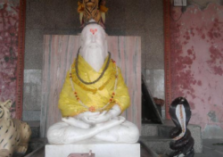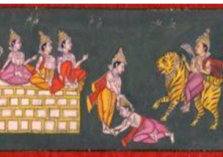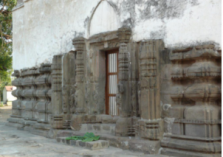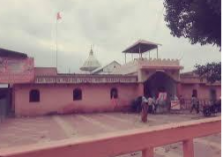Changdev Temple
Introduction
Due to its geographical position connecting the north and south, Khandesh was frequently targeted by Muslim invasions. As a result, few significant new religious structures were built in the region after the 13th century. Despite this, the Changdev Temple stands as an excellent example of the architectural style and layout of that era in Khandesh.
The temple reflects the influence of the traditional Gurukul system, with a central hall surrounded by pillared corridors and special design considerations for the sanctum. Architectural elements of Buddhist caves and structures also impacted its design. Built under the guidance of architects from northern and eastern India, the temple showcases a blend of regional styles.
Distinctive features include:
- Low-relief sculptures
- Horizontal stone bands
- Decorative vines (velpatti)
- Carved arches (toranas)
- Shaped patterns like Shankarpalya (a traditional sweet)
- Intricately carved idols and motifs throughout the interior and exterior
Because the temple is made of stone, its carvings have remained well-preserved. It is located in Changdev village in Jalgaon district, approximately 8 km from Savda Railway Station on the Bhusawal-Itarsi rail route, near the confluence of the Tapi and Purna rivers.
Historical and Spiritual Significance
According to Hindu tradition, spiritual elevation through yoga, mantras, and tantras requires a calm and sacred environment, typically provided by monasteries (mathas). During the 11th and 12th centuries, many such mathas were built in this region.
It is believed that Govindraja, a feudatory of the Yadava king Seuna (or Sen II) of Devagiri, built this temple in the 11th century. Other temples, such as the Sun Temple at Waghuli and Sangameshwar Mahadev Temple in Chalisgaon, are also attributed to his reign.
Contrary to popular belief, the name Changdev is not associated with the yogi Changdev. Instead, it likely refers to Changdev, a military chief under King Nikumbh Govana, as mentioned in an inscription at Maheshwar Temple in Patan village, about 15 km from Chalisgaon. The name was also shared by a grandson of the famous astronomer Bhaskaracharya. In 1306 CE, Yadava King Sindhana granted lands to Changdev as an inam (gift).
The temple also served as a learning center for ancient texts on architecture, such as Shilparatnakar, leading to the development of a new and dynamic architectural style in the region.
Architectural Features
- Semi-pillars and stone figures
- Beautifully carved ceilings
- Vine and foliage motifs
- Horizontal sculptural panels
- Stone carvings resembling hanging wooden decorations, especially near balconies
Changdev Temple
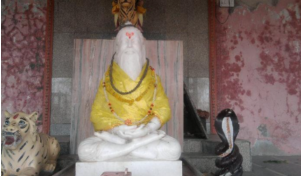
Saint Changdev
Saint Changdev
Saint Changdev was a revered poet-saint of the Nath sect in Maharashtra and a spiritually advanced practitioner of yoga. According to legend, he lived for 1,400 years through his yogic powers. His spiritual guru was known as Vateshwar, which is why Changdev is also referred to as Changvateshwar. Some believe that Vateshwar symbolizes the divine light manifesting within Changdev himself.
He attained yogic enlightenment while meditating with closed eyes in the forests near the village of Changdev, situated on the banks of the Tapi and Payoshni rivers. Due to his noble and handsome appearance, people began calling him Changdev.
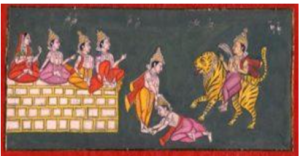
Once, Changdev heard of the great fame of Saint Dnyaneshwar, and he developed a strong desire to meet him. Before the meeting, he thought of sending a letter and began writing one. However, in the confusion of what to write, he ended up sending a blank letter. Despite being a yogi, Nivrittnath realized that Changdev lacked self-realization and the grace of a guru. He instructed Dnyaneshwar to write a response to Changdev’s letter. Following this, Dnyaneshwar wrote a reply, which became famous as “Changdev Pasashti.”
Afterward, Changdev, Nivrittnath, Dnyaneshwar, Muktabai, and Sopan met. Later, Changdev accepted Muktabai as his guru. In 1305 (Shaka 1227), Changdev took samadhi. (There are several different opinions about this date.)
Temple Architecture
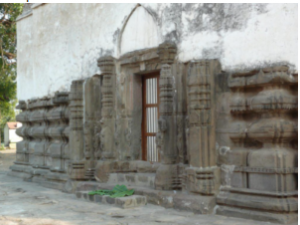
Changdev’s Temple Built in stone
Changdev’s temple is constructed entirely out of stone, without the use of lime. The stones are shaped and placed one upon the other to form the temple’s walls, making the structure extremely sturdy. The temple is 32 meters long and approximately 40 meters wide. The assembly hall (sabhamandap) is about 14 meters high, with four full columns and four half-columns at each corner.
The sixteen full columns and sixteen half-columns support a strong roof, and it is believed that stone urns (kalash) might have been planned to be placed on top. However, due to adverse circumstances or political factors, the work was left incomplete, and later, the upper spire was constructed using bricks. The ceiling is a dome-shaped, intricately designed vaulted roof. According to Dr. Henry Cousins, it seems that the original plan was to construct the upper portion using bricks.
The exterior of the temple features decorative motifs, including the shape of a shankarpalya, shallow carvings, horizontal stripes, and vertical sculptures with intertwining vine patterns. The design of the pillars and the intricate carvings are notable. The Government of India declared this temple a national heritage monument of Maharashtra on April 3, 1916.
Changdev’s Festival
Every person from Khandesh has, at least once, traveled to the pilgrimage of Changdev, often by bullock cart. People gather in large numbers in the desert area by the river, leaving behind their carts. During the pilgrimage, on the occasion of Shivaratri, devotees perform worship of Lord Shiva, concluding their fast with a unique offering of dalbhatti as a prasad. This is a special preparation made from coarse dal and wheat flour, cooked and roasted over an open flame.
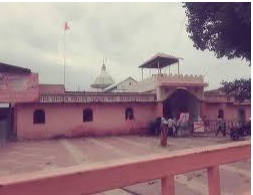
Changdev’s Temple
The pilgrimage is marked by various shops, especially those selling brass utensils, and theatrical troupes performing scenes from the Ramayana and Mahabharata. This adds to the festive atmosphere. The festival period lasts from the third day of the month of Magh until the new moon day (Amavasya). The gathering intensifies during lunar and solar eclipses, as the confluence of rivers in this area attracts a larger crowd for the fair. Among the prominent pilgrimage sites in Khandesh, Changdev’s temple holds a special place.
Changdev’s Samadhi
Puntamba is a village located on the banks of the Godavari River in the Rahata taluka of Ahmednagar district, Maharashtra. It is the site of Saint Changdev’s samadhi. The village is home to many ancient temples, adding to its spiritual significance.
The Samadhi of Saint Changdev Maharaj, who lived for 1400 years, is the main temple in Puntamba. It is believed that Saint Changdev meditated at different places over the centuries, and Puntamba is the fourteenth place where he took his Samadhi. According to a legend, Saint Changdev was proud of his own powers. He once rode a tiger, holding a serpent whip in his hand, to meet Saint Dnyaneshwar. Dnyaneshwar decided to humble Changdev. He, along with his siblings, sat on a wall and waited for Changdev to approach. Upon seeing them, Changdev’s pride was shattered. He bowed down before the siblings and sought their forgiveness. Saint Changdev Maharaj was a master in the path of yoga, and it is believed that he lived for 1400 years. Many legends are told about his life, but it is said that his ego remained intact until Saint Dnyaneshwar humbled him through the “Changdev Pasashti” scripture, giving him wisdom and teachings.
In Puntamba, there is a temple dedicated to Changdev, built in the 12th century, known as the temple of Changobua. During the time of Saint Dnyaneshwar, Changdev was recognized by the name Vateshwar.
The Changdev temple was constructed in the 17th century. While the temple is ancient, its design is simple. The main deity, Lord Vitthal-Rakhumai, is placed in the eastern direction of the temple, with a mandapa in front that is supported by 10 wooden pillars. The roof is made of panhali tiles, which slope down from all four sides. Changdev’s Samadhi is located behind the temple. Near the Samadhi, there is a marble statue of Changdev along with his sandals (padukas). The temple is surrounded by a protective wall. To the west of the Samadhi, there is a beautiful view of the Godavari River. Every year, a pilgrimage fair is held here during the month of Kartik.
Contact Details
Address: Jalgaon




